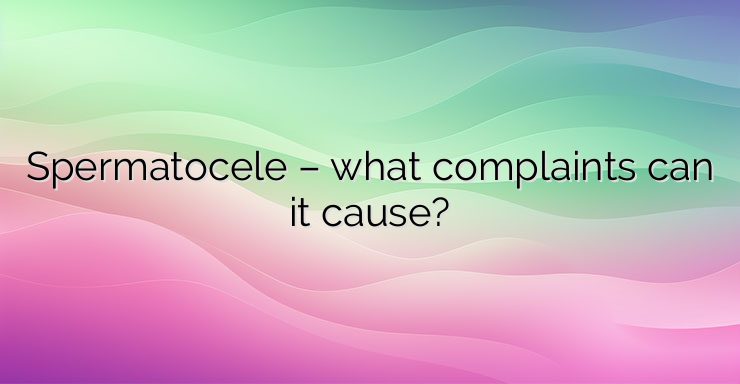What is a spermatocele? A spermatocele is often a painless, benign cyst that occurs near the testicle. It may also be referred to as a spermatic or epididymal cyst. The cyst forms in the epididymis (testicle). The epididymis is located on the back edge of the testicle and is a strongly folded channel. The cyst may be filled with fluid and may contain dead sperm. What are the symptoms of spermatocele? Spermatocele cannot be seen during visual examination. This is because the cyst is located in the scrotum itself. However, the cyst can be palpated (an examination that is based on the tactile sensation when touching body structures). A spermatocele can be felt as a smooth but distinct, firm lump. The lump is located near the top of or behind the testicle. Spermatocele can most often be discovered during a routine physical examination, when a doctor checks for signs of testicular growths. Spermatocele is a benign growth and occurs only in the scrotum. This means that the condition is not a sign of testicular cancer. If the cyst becomes too large, it can cause discomfort or pain in the testicle. The condition can also cause a feeling of heaviness as well as a feeling of fullness in the testicle. The presence of a mass in the scrotum can also signal another problem, so it is important to consult a doctor when noticing lumps in the scrotum. In this way, more serious causes of complaints can be excluded and a treatment plan can be drawn up. Does spermatocele cause infertility? Specialists do not believe that spermatocele can be a cause of infertility. The condition can reduce the quantity and quality of semen produced if the cyst is large. There are some other possible causes of male infertility. An important step is to have a semen analysis done. What are the causes of spermatocele? Researchers do not know what causes spermatocele, but it is important to know that spermatocele is not cancer, nor does it increase the risk of testicular cancer. Bibliography: National Center for Biotechnology Information (NCBI). Beiko DT, et al. Percutaneous aspiration and sclerotherapy for treatment of spermatoceles National Health Service (NHS). Testicular lumps and swellings Urology Care Foundation. What are spermatoceles (spermatic cysts)?


Leave a Reply